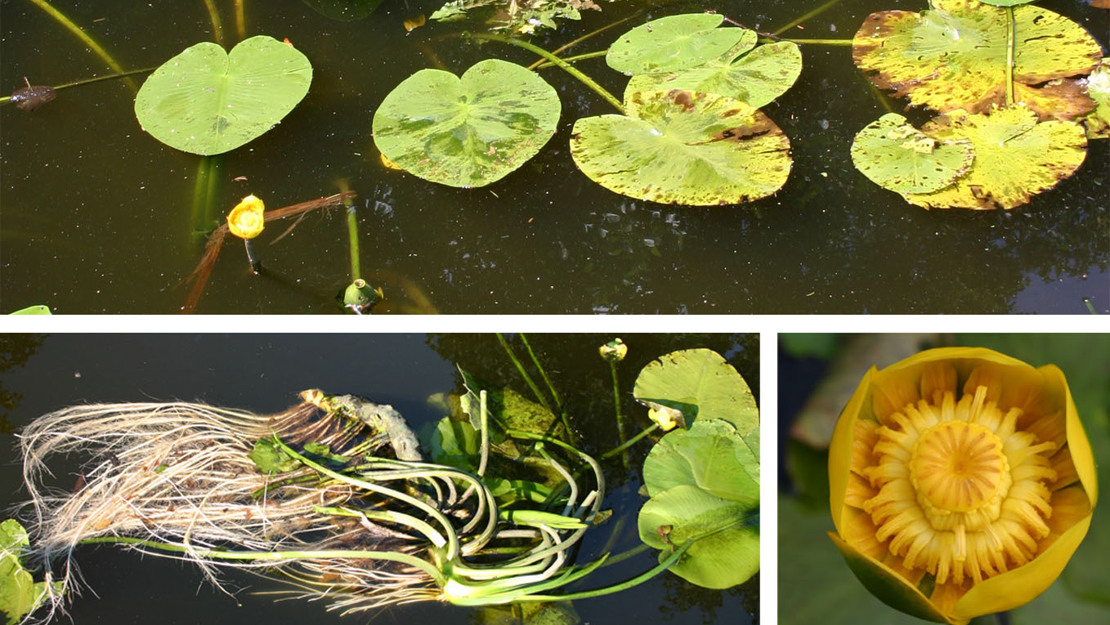Nuphar lutea
Yellow water lily
Also known as:
Brandy bottle
Family: Nymphaeaceae
Origin: Africa, Eurasia, North America, West Indies

Regional Pest Management Plan (RPMP) status
- National Pest Plant Accord Species
- Whole region — Sustained control
General description
Perennial aquatic bottom-rooted herb. Rhizomes are large and stout. Leaves are ovate and < 30 cm long when floating on water surface, and thin and simple when beneath surface. Flowers have a strong alcohol smell and are yellow, < 6 cm in diameter and held above the water’s surface in spring – summer. Fruit is green and ripens in summer – autumn.
What you need to know
To help protect our environment:
- You must not breed, distribute, release or sell yellow water lily. As yellow water lily is a National Pest Plant Accord species, these restrictions apply within the Auckland region and across the whole of New Zealand.
- You must not plant yellow water lily within the Auckland region, unless you are transferring an existing plant on your land to another location within the boundaries of the same property.
- You must destroy any yellow water lily on land that you occupy if it has been planted in breach of the above rules and you are directed to do so by an authorised person.
Habitats
Still or slow-moving water bodies < 2 m deep.
Dispersal
Seeds dispersed by water. Vegetative spread from rhizome fragments, dispersed by water. Human-mediated dispersal through movement of contaminated equipment and deliberate plantings.
Impact on environment
Forms dense mats, suppressing submerged aquatic vegetation. Can alter faunal habitat structure and patterns of nutrient storage in sediment. May reduce dissolved oxygen levels.
Control
Site Management
Follow up treated areas 3 times per year.
Recommended approaches
Physical control
Method: Dig out.
Plant parts requiring disposal: All parts.
Disposal options: Remove to greenwaste or landfill.
Biocontrol
Biocontrol is currently not available for this species.
Community agrichemical control recommendations
Certified Handler/Experienced agrichemical user: Foliar spray emergent foliage with 300ml glyphosate green per 10L of water.
Caution: When using any herbicide or pesticide please read the label thoroughly to ensure that all instructions and safety requirements are followed.



